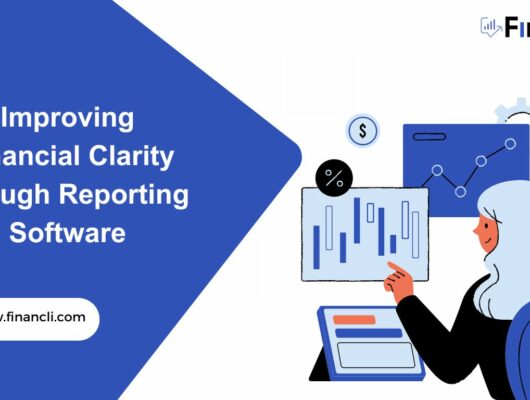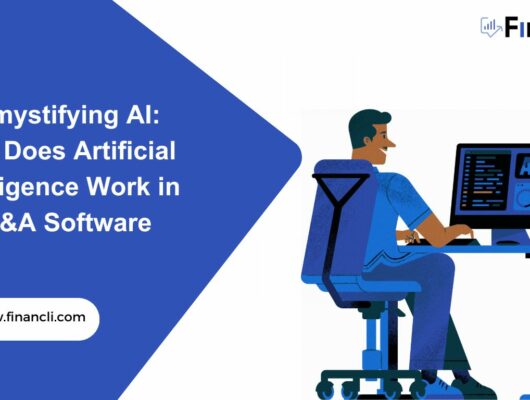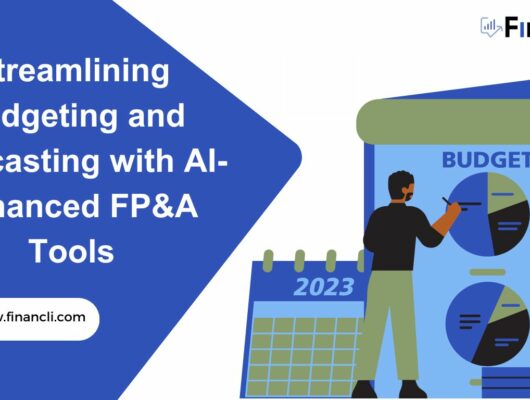Financial Scenario Planning in Uncertain Times: The Role of FP&A Software
Definition of Financial Scenario Planning
Financial scenario planning is a strategic tool. It helps finance teams anticipate and prepare for various future states. This approach considers different market conditions and business drivers. It’s crucial for informed decisions.
Importance of Scenario Planning in Uncertain Times

In an era marked by market volatility and unpredictability, the importance of scenario planning cannot be overstated. This strategic approach is crucial for finance departments aiming to navigate through uncertain times effectively. Here’s why:
1. Preparedness for Multiple Outcomes:
Scenario planning prepares organizations for a range of possible futures. In volatile markets, conditions can change rapidly. By considering various potential scenarios, finance teams can develop robust strategies to handle different outcomes, ensuring they are not caught off guard.
2. Risk Management:
It plays a pivotal role in identifying and managing risks. By analyzing different scenarios, finance departments can pinpoint potential risks in each and devise strategies to mitigate them. This proactive approach to risk management is essential in maintaining stability during turbulent times.
3. Supports Strategic Decision-Making:
Scenario planning provides a foundation for informed and strategic decision-making. It allows finance leaders to weigh the implications of different decisions in various scenarios, leading to choices that are not only reactive but also strategic and forward-thinking.
4. Enhances Business Continuity:
The primary goal of scenario planning in uncertain times is to ensure business continuity. By anticipating potential disruptions and planning for them, organizations can maintain operations even in adverse conditions. This continuity is vital for sustaining customer trust and market position.
5. Optimizes Performance:
Effective scenario planning directly contributes to business performance. By being prepared for different market conditions, companies can pivot quickly, seize opportunities, and maintain a competitive edge. This agility is crucial for not just surviving but thriving in uncertain markets.
6. Encourages Organizational Learning:
Scenario planning helps cultivate an organization’s culture of ongoing learning. Teams that regularly engage in this process become more adept at understanding market dynamics and can adapt their strategies more effectively over time.
Overview of FP&A (Financial Planning & Analysis) Software
FP&A software represents a transformative tool for finance professionals, reshaping how they approach financial planning and analysis in today’s dynamic business environment. Here’s a more detailed look at its role and impact:
1. Integration with Enterprise Resource Planning (ERP) Systems:
One of the key strengths of FP&A software is its ability to integrate with existing ERP systems seamlessly. This integration enables the organization to combine financial data from multiple sources and holistically view the company’s financial health. It ensures that the data used for financial planning and analysis is accurate, up-to-date, and reflective of the entire business operation.
2. Streamlining the Scenario Planning Process:
FP&A software greatly simplifies the process of scenario planning. It enables finance teams to quickly model and compare different financial scenarios, considering various variables and assumptions. This capability is crucial for assessing the potential impacts of various market conditions, business strategies, and economic factors on the organization’s financial future.
3. Facilitating Strategic Decision-Making:
In the rapidly changing business landscape, making informed and timely decisions is critical. FP&A software provides finance professionals with the tools and insights needed for strategic decision-making. It offers advanced analytics, forecasting, and budgeting capabilities, allowing finance teams to analyze trends, predict future financial outcomes, and make decisions based on robust financial data and projections.
4. Enhancing Collaboration and Visibility:
Modern FP&A software often comes with features that enhance collaboration among different departments. It provides a unified platform where various stakeholders can input data, share insights, and collaborate on financial planning. Enhanced transparency and teamwork guarantee that strategic choices are thoroughly informed and in harmony with the broader business goals.
5. Adapting to Market Changes:
The agility provided by FP&A software is invaluable in today’s business world, where market conditions can shift rapidly. The software’s ability to quickly adjust and forecast based on new data helps organizations stay agile and responsive to market changes, ensuring they remain competitive and financially stable.
6. Driving Business Performance:
Ultimately, the use of FP&A software is about driving better business performance. By providing detailed insights into financial operations, enabling more accurate forecasting, and facilitating strategic planning, FP&A software helps organizations optimize their financial performance and achieve their business goals.
How FP&A Software Facilitates Effective Scenario Planning

FP&A (Financial Planning & Analysis) software has become a cornerstone in modern scenario planning, offering capabilities that revolutionize how organizations approach their financial strategies, especially under uncertainty. Here’s an elaboration on its role:
1. Predictive Analytics and Modeling:
At the heart of FP&A software is its ability to perform predictive analytics. This feature allows finance leaders to create and analyze a variety of financial models based on different assumptions and variables. By simulating various scenarios, from market downturns to rapid growth, organizations can foresee the potential financial outcomes and impacts on their business.
2. Enhancing Business Agility:
Agility is key in today’s fast-paced business environment. FP&A software enables organizations to quickly adapt their financial strategies in response to changing market conditions. This agility is crucial for maintaining a competitive edge. The software allows for rapid re-forecasting and adjustments to plans, ensuring that the business remains resilient and responsive.
3. Facilitating “What-If” Analyses:
One of the most significant advantages of FP&A software is its ability to facilitate detailed “what-if” analyses. Finance teams can explore the financial implications of various hypothetical situations, such as changes in market demand, supply chain disruptions, or new regulatory environments. This capability is invaluable for risk assessment and contingency planning.
4. Data-Driven Insights for Decision Making:
FP&A software provides finance teams with data-driven insights, which are essential for informed decision-making. By harnessing the power of big data and advanced analytics, the software can uncover trends, patterns, and insights that might not be apparent otherwise. This level of analysis supports more strategic and effective financial decisions.
5. Streamlining Collaboration and Reporting:
Effective scenario planning often requires input from various departments within an organization. FP&A software facilitates this collaboration by providing a centralized platform where different teams can contribute data, share insights, and work together on financial plans. Additionally, the software simplifies the reporting process, making it easier to communicate findings and strategies to stakeholders.
6. Customization and Flexibility:
Modern FP&A software offers a high degree of customization and flexibility, allowing organizations to tailor their scenario planning to their specific needs and circumstances. Whether it’s adjusting timeframes, incorporating unique business drivers, or exploring unconventional market scenarios, FP&A software can accommodate a wide range of planning requirements.
In summary, FP&A software plays a pivotal role in scenario planning by providing advanced tools for predictive analytics, enhancing business agility, facilitating comprehensive “what-if” analyses, offering data-driven insights, streamlining collaboration, and offering customization. These capabilities are essential for organizations looking to navigate the complexities and uncertainties of the modern business environment effectively.
Benefits of Using FP&A Software for Scenario Planning
Enhanced Data Accuracy and Real-Time Analysis
The software ensures data accuracy. It provides real-time analysis, which is crucial for financial performance. This feature supports dynamic market trend assessments.
Improved Forecasting and Decision-Making
FP&A software improves forecasting. It aids in strategic decision-making. Finance teams can better manage cash flow and balance sheets.
Increased Flexibility and Adaptability to Change
The software increases flexibility. It adapts to changes in supply chain and market conditions. This adaptability is key for business performance.
Frequently Asked Questions:
How can FP&A technology provide certainty in uncertain times?
-FP&A technology offers predictive insights. It helps in planning for various market scenarios. This certainty is invaluable in uncertain times.
Why are FP&A teams increasingly utilizing scenario planning?
-FP&A teams use scenario planning for their predictive
capabilities. It helps them prepare for market volatility and make strategic decisions.
How do you consider the “What-ifs” in times of uncertainty?
-By using FP&A software, finance teams can model different potential scenarios. This process helps in evaluating the impact of various business drivers and market conditions.
Conclusion
Today, FP&A and finance are transforming. This change is driven by digital technology and real-time data availability. FP&A software is at the forefront of this evolution. It empowers finance departments with enhanced scenario-planning capabilities. This tool is essential for strategic decision-making, especially in uncertain times. By leveraging FP&A software, finance professionals can ensure business agility and continuity. They can make informed decisions that positively impact the financial health and success of their organizations.






